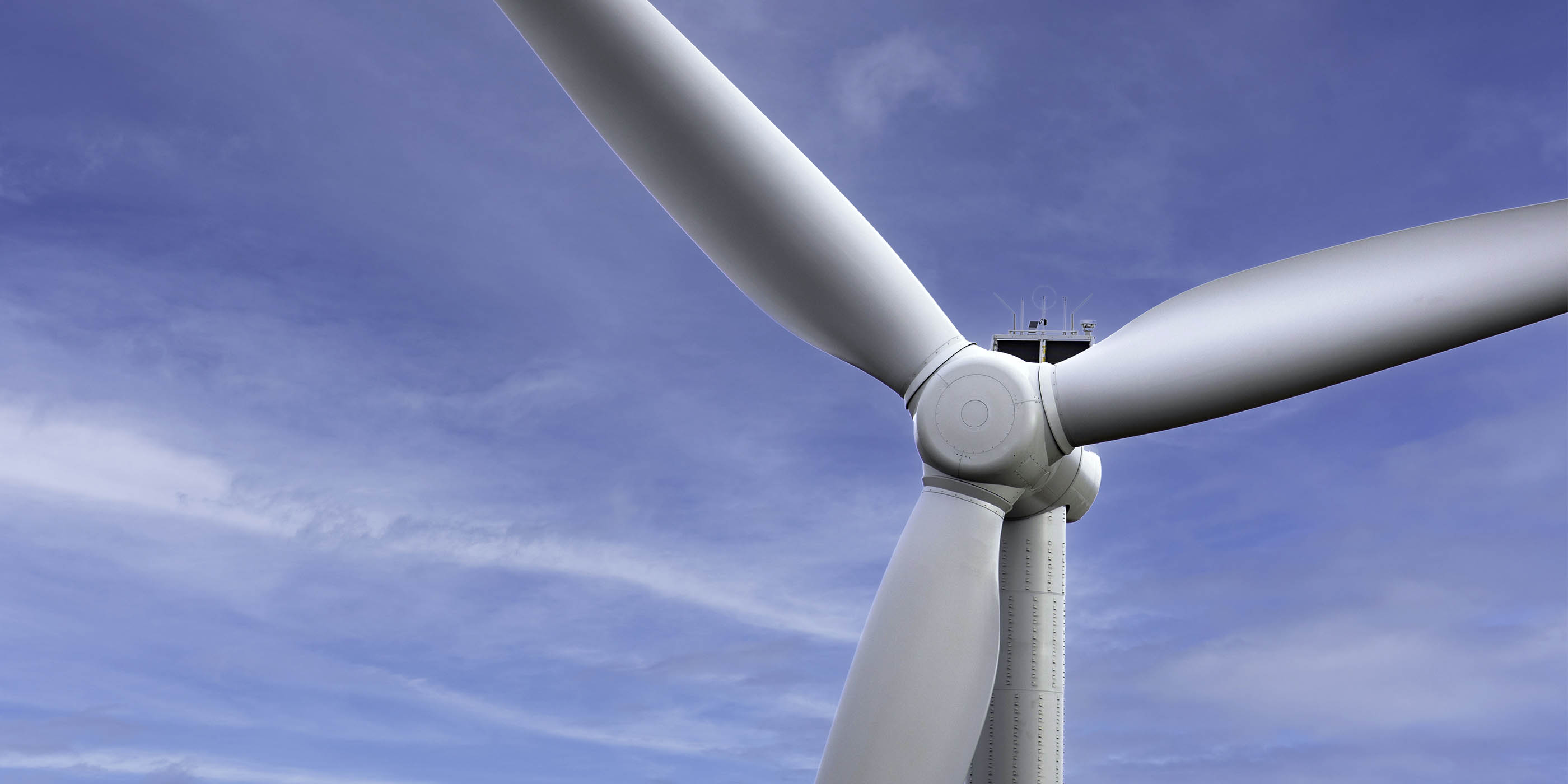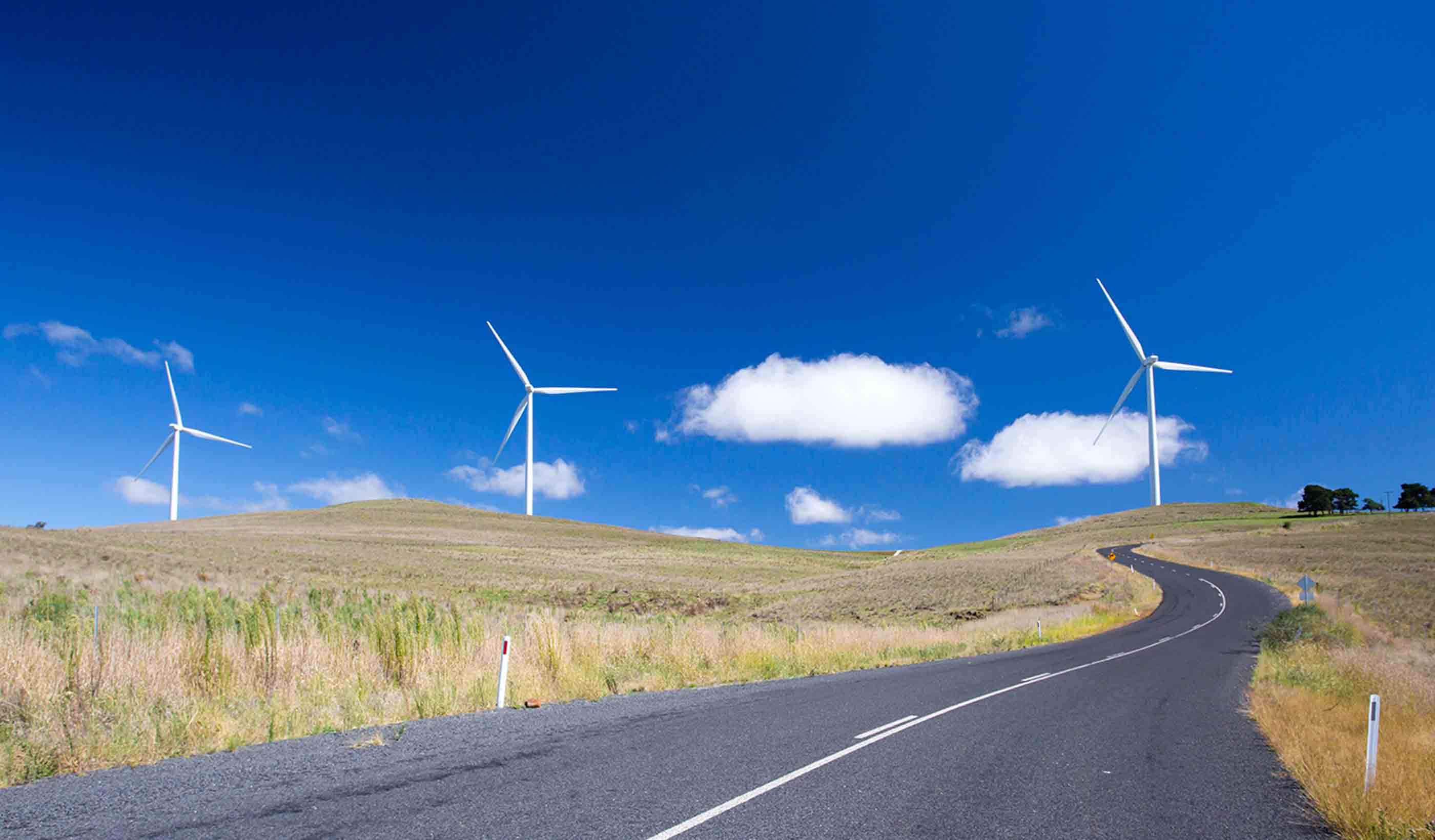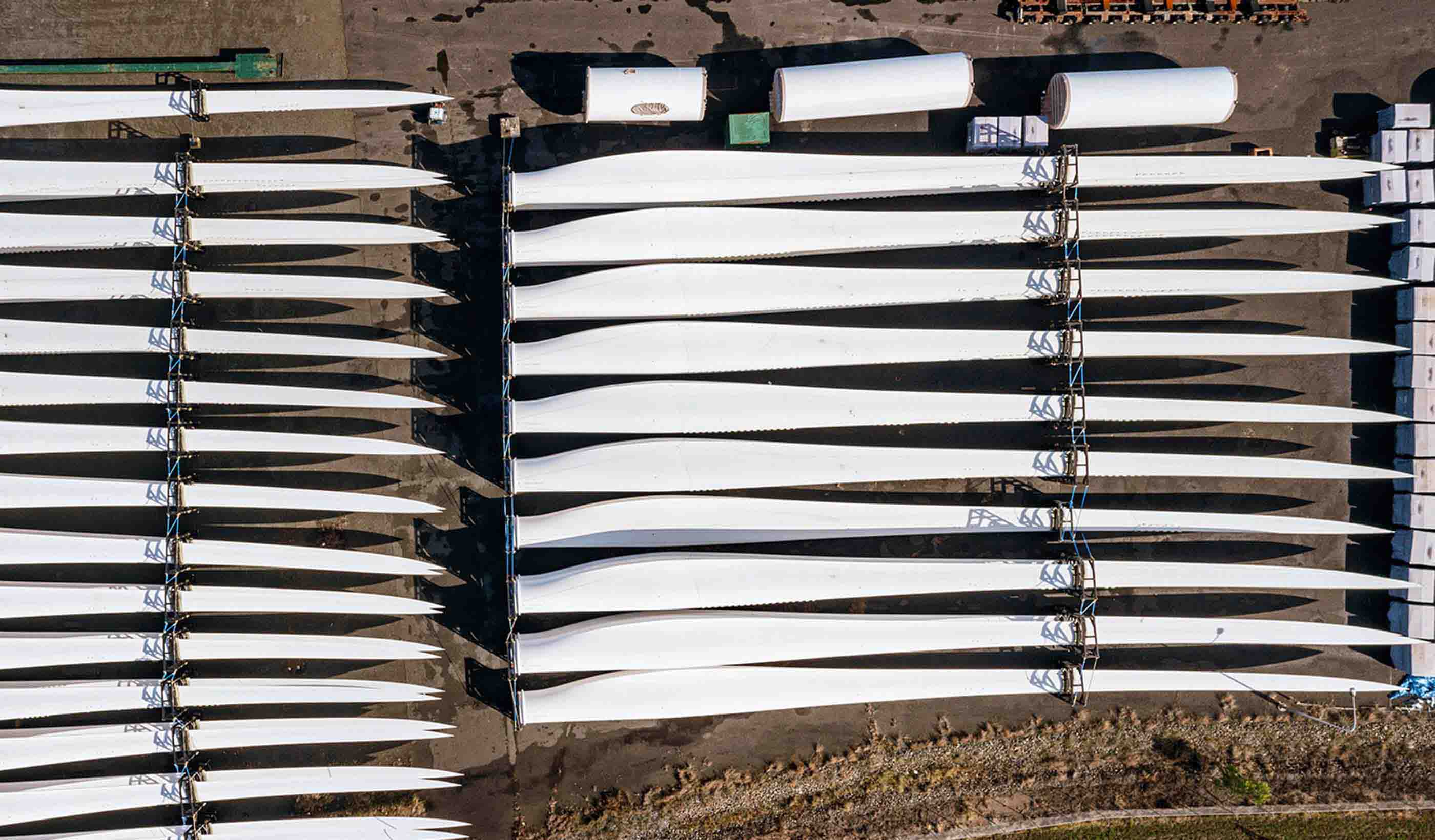Overcoming challenges in wind turbine transportation: Why route assessments are critical
November 15, 2024
November 15, 2024
Transporting wind turbines by road involves unique logistical challenges. Careful planning is required to move components from port to site.
Wind turbines are massive—and they’re getting bigger. Each time we encounter a new wind farm project, we’re reminded just how enormous these turbines are. In the early days of wind energy, wind turbines had blades around 25 metres long. By the mid-2000s, those blades had nearly doubled in length and the towers grew taller as a result.
Today, those blades have more than doubled in length again, spanning over 80 metres. with towers stretching as high as 135 metres into the air. It results in tip heights exceeding 240 metres. Together, the turbine and blades for one wind turbine can weigh more than 700 tonnes.
The bigger the wind turbines, the more electricity they generate. Right now, wind turbines generate about 10 percent of electricity in the US and 6 percent in Canada. In Australia, wind turbines now generate enough clean energy to meet 7 percent of the nation’s demand. Across the Tasman Sea, they represent over 12 percent of New Zealand’s total installed electricity capacity. Those turbines generate enough energy to power more than 620,000 Kiwi homes a year.
But the bigger wind turbines get, the more challenging wind turbine transport becomes. Moving them to the project site requires careful planning to get them safely to their new home.

Modern wind turbine blades can span more than 80 metres. Transporting them by road requiring meticulous planning from port to site.
Wind turbines have three primary components: rotor blades and hub, the tower sections, and the nacelle (power generating turbine). Each has its own transport challenges due to their weight, width, or length.
For its journey from the arrival port to the site, the tower is typically broken down into three to five sections, to be assembled once it arrives at the wind farm. But, even broken down into smaller parts, the tower’s enormous circumference and weight means when it’s loaded onto a truck, it can be difficult—sometimes impossible—for it to pass under or over bridges. In some cases, our clients pay to dismantle and reengineer for highway infrastructure to make wind turbine transport possible. Adjusting routes on the fly is also part of the job.
The blades present another key challenge in wind turbine transport. While they can also have trouble passing under bridges, their length also makes navigating tight corners difficult. Sometimes it’s a matter of detouring through smaller towns or cutting through paddocks, balancing logistics with impact to local communities and landowners. Some manufacturers have started producing blades in sections, making them easier to move.
Wind turbines can’t travel alone, either. They’re escorted by a convoy of pilot vehicles and even police escorts. To minimize traffic disruption and provide public safety, wind turbine transportation often occurs at night. It’s always a somewhat surreal sight, moving enormous components through quiet streets in the early hours. But no matter what time of day the turbines leave the port, careful route selection is critical.

Wind farms are often situated in remote, hilly terrain. The sites pose challenges for transporting wind turbine blades from highways to local roads.
The route planning stage generally happens after a site is selected for the wind farm. At this stage, we consider several routes to transport the wind turbines from the port to the wind farm site.
We usually look into at least three routes for transporting wind turbine blades and three for transporting the towers. This helps to give us some options in case we come up against any roadblocks. This involves identifying constraints, like highway infrastructure or environmental no-go zones. We also look at routes used for previous wind farm projects. We use those when we can. But every project has its own twists and turns—even when you’re working with familiar routes.
The first challenge is transporting the wind turbines from the port to the highway. This usually involves a few bridges, making it difficult to get the towers out. But once the towers are on the open road, they can take a more direct and faster route to the site than the blades. With wind farms usually located in remote, hilly terrain, at some stage they must leave the highway for local roads. This can be a struggle for the blade transporters.
After selecting the most promising route, we do a visual inspection and perform a swept path analysis to identify any major impacts. On-site inspections can reveal surprises that the desktop analysis doesn’t—detours, elevation changes, or new construction can all impact the final route. Following the assessment, we recommend the route that limits impact on infrastructure and things like flora and fauna. Environmental factors can be a major challenge. And in rare instances, the impact on local ecosystems can mean a wind farm project itself doesn’t go ahead.
Given the size of the turbine components, there are often points along the route where navigation becomes physically impossible without making changes to the existing infrastructure or environment.
The Southland Wind Farm in New Zealand’s South Island is a prime example of the importance of route planning.
As part of its emissions-reduction plan, the New Zealand Government plans to double renewable energy by 2050. The Southland Wind Farm helps support the plan. It includes 55 wind turbines, which are expected to produce between 900 and 1,200 GWh per year of electricity—enough to power 110,000 to 150,000 homes.
For the project, we carried out a transport assessment as part of a fast-track consent process. It focused on the identification and assessment of routes for transporting the large components, including 83-metre-long blades and 5-metre-wide tower sections.
While wind turbines have been transported along the same route before, the increased size of these components meant we needed to identify additional route options and mitigation measures. We tested the route options for moving the wind turbines, using a combination of site inspections and vehicle tracking simulations.
Often, we find that the chosen route isn’t always the most direct one. But it’s the one that proves most cost-effective in the long run. Given the size of the turbine components, there are often points along the route where navigation becomes impossible without making changes to the existing infrastructure or environment.

Transporting wind turbines is challenging, but the clean energy and reduced carbon emissions make the effort worthwhile.
Take the Golden Plains Wind Farm in Victoria, Australia. It’s set to be the largest wind farm in the Southern Hemisphere, with 215 turbines spread across a 16,000-hectare site. The wind farm will generate enough electricity to power more than 500,000 homes. And it will cut carbon dioxide emissions by 3.5 million tonnes annually.
Transporting the huge wind turbines from the Port of Geelong involved detailed planning due to the size and weight of the components. While wind farms and wind turbines have been transported from the port before, this project involved significantly larger blades—90 metres long—which required extensive route planning. We conducted route assessments, traffic impact studies, and traffic management plans to support the project. We wanted the transportation to be as smooth as possible with minimal disruptions to the public.
Transporting the blades was also difficult. When a road is only 3 metres wide, maneuvering a 90-metre blade requires a lot of space. We were provided with ecological reports and no-go zones. The most significant impacts on vegetation occurred when we had to move the blades off the highway. We had to work around these by using preexisting openings in farms and carefully navigating around restricted areas.
Wind turbine transport is no easy task. From navigating highway bridges and gantries to overcoming environmental obstacles, planning a complex route takes time.
Every wind turbine transportation project is a reminder of the effort that goes into the energy transition. But the amount of green energy these wind farms produce—and the significant reduction in carbon emissions—makes it worth the investment.